Millennial Activists Driving America's Revenue Growth
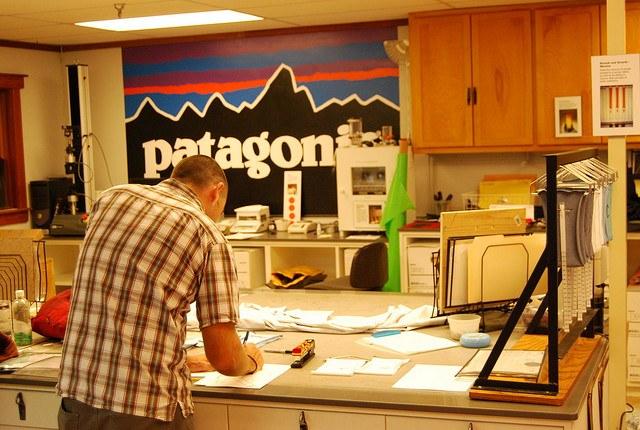

The millennial activist is now driving revenue growth in the American economy. Their quest for products and companies that are “cool with a purpose” is driving the revenue success of Apple, Google, Patagonia and Chipotle. They are also a key demographic group that is driving down the revenues of McDonald’s, Coca-Cola and your local utility. Figuring out how to successfully align with millennial activists is now the strategic challenge facing every business.
Millennial activists seek solutions
For 40 years the American economy has been driven by a boomer generation that demonstrated for peace and love during their teenage years but then, after Woodstock, “sold-out” to their personal consumption. It was the boomer generation that embraced fast food as America’s diet choice because it was tasty, fast and cheap. The boomer generation created suburbs of less energy-efficient homes, linked to their workplaces through an urban commute too often executed in full-size vehicles powered by V-8 engines. To fund their consumption, they made the working mom an economic reality along with credit card debt and unsustainably high mortgages. The unintended consequences of the boomer generation’s decisions include a national obesity and diabetes epidemic, pump/meter price pain driven by energy demand, and increased government regulations to address the human and planet health impacts from record levels of air emissions. Our economy now struggles to grow against the headwinds of costs and debt created from the boomer generation’s consumption decisions.
The millennial generation seeks solutions to the problems they have inherited from their parents. This is not a personal rejection of their parents. But it is a rejection of lifestyles built upon energy inefficiency, consumer debt and unhealthy food consumption. Led by pioneering millennial activists, the millennial generation is rejuvenating downtowns across America. They are choosing to live in more energy-efficient, in-town homes to gain the benefits of social participation, diversity and sustainability. They are adopting lifestyles built on healthy foods, walking/biking to work, sharing rather than purchasing and the adoption of digital technology to enable productivity while also reducing their environmental footprint. Influenced through millennial activists, the millennial generation is adopting a new culture built upon best practices that align value with values.
Who and what is cool with a purpose?
Elon Musk is the poster person for cool with a purpose among millennial activists. They are captured by his vision that is bigger than the quest for wealth -- though the millennial generation is also attracted by his financial success achieved through making a positive difference. Yvon Chouinard, founder of Patagonia, also engages millennial activists. His story of turning his passion for rock climbing into a successful retail store chain -- that markets environmental sustainability with pioneering ads like “Don’t Buy This Jacket” -- is this generation’s Horatio Algers story of personal success that is both cool and purposeful.Not every company can have an Elon Musk or Yvon Chouinard as their founder. But the companies that win the revenues of millennial activists have these four characteristics:
- Good wins. Whether it is offering a living wage or a commitment to environmental solutions, a business must be in business to create good if it is to attract the millennial activist. Millennial activists respect Costco for its treatment of employees. They are attracted to the solar industry because of its zero onsite emissions. They align with Google’s Code of Conduct that begins with “Don’t do evil.” A business that does not create good stands on a house of cards that will not sustain revenue growth with the millennial generation.
- An alignment of values and value. The millennial generation began their careers in the mist of the Great Recession. Value is a paramount procurement driver for them. But, especially among millennial activists, the search for value is not at the expense of their values. They will not eat at McDonald's even if it is cheap because they view the food as unhealthy. They will eat at Chipotle because the food is a good value and Chipotle has made a corporate commitment to sustainably source its ingredients. Millennials are embracing Uber and the sharing economy for its value but also because it aligns with their values for achieving a smaller environmental footprint. The business path to revenue growth with the millennial generation is to align value with values.
- Sustainable innovation. Millennials were raised expecting a sweeping digital technology innovation every two years. Millennial activists look to technology innovation as the solution path to realizing human health and environmental solutions. They expect the businesses they do business with to be leaders in adopting technologies that create sustainable solutions. Millennial activists have expectations that business locations will be zero waste, resource efficient and use renewable energy. Beyond the economics, it is the millennial activists focus upon sustainable innovation that is pushing companies as diverse as Walmart and Apple to commit to using 100 percent renewable energy at their locations.
- Engagement and diversity. The millennial generation is the most diverse in U.S. history. They are also the most digitally connected generation. They live, connect, engage and learn through their mobile devices. No business will succeed with the millennial generation without a mobile technology path that engages. No business will have a meaningful engagement with millennial generation activists without contributing toward their quest for a “cool with a purpose” society that respects diversity.
Who is not cool with a purpose?
Millennial activists view American corporations as part of the problem rather than being cool with a purpose. Banks are at the top of their list because millennials hold banks as being responsible for the Great Recession. They also have unpleasant personal experiences fighting banks over overdraft and other banking fees. With that understanding, is it a surprise that Apple, a brand with a strong millennial generation affinity, launched Apple Pay?
The Coca-Cola Co. and McDonald’s are two companies with a revenue crisis tied to their struggling alignment with the millennial generation. Millennial activists view these companies with mistrust from a lifetime of massive promotions for products that are laced with sugar and artificial ingredients that millennials link to today’s national obesity and diabetes epidemic. A generation raised by their parents on Happy Meals and a Coke is now choosing healthier alternatives. The economic consequences for the Coca Cola Co. and McDonalds are lower revenues.
Oil companies and local utilities are at revenue erosion risk from the millennial generation’s adoption of energy efficiency, digital technologies and sustainable best practices. The millennial generation associates Shell, BP, Exxon-Mobil and Chevron with environmental disasters that span the globe, including climate change. It is not cool with a purpose to drive a V-8. It is cool with a purpose to drive a Tesla. It is especially cool with a purpose to not own a car because you live in an in-town loft and bike or walk to work. Most millennials are more focused on buying the next smartphone than on buying a car.
Electric utilities are, for the most part, invisible to a millennial generation that engages and connects via smart phones. Millennials view the utility industry as an outdated dinosaur that fails to engage through blogging, tweets or Facebook posts other than placing their own messaging online. They also view the industry as being a barrier to the adoption of cool with a purpose technologies like solar. The millennial generation would view a Net Zero Energy home or office with smart systems that seamlessly integrate onsite solar generation, onsite batteries and energy efficiency technologies to achieve lower costs and environmental impacts as a much cooler with a purpose solution than natural-gas fired power plants linked via transmission and distribution wires that deliver high bills and emission levels unsustainable in an environment now experiencing climate change from a carbon surge.
Design a revenue growth strategy satisfying millennial activists
Revenue growth for every American business is now tied to their ability to align with the millennial generation’s guest to be cool with a purpose. The key to winning millennials as customers is to engage millennial activists who, through their digital outreach via their smart phones, are pushing the pictures, videos and text that are influencing what millennials buy and who they buy from. The business path to attracting millennial customers is to align value with values in product offerings. That is being cool with a purpose. That is the path to revenue growth in the 21st century economy.
Image credit: Flickr/faircompanies
Bill Roth is an economist and the Founder of Earth 2017. He coaches business owners and leaders on proven best practices in pricing, marketing and operations that make money and create a positive difference. His book, The Secret Green Sauce, profiles business case studies of pioneering best practices that are proven to win customers and grow product revenues. Follow him on Twitter: @earth2017
Lehigh Technologies Forges Ahead in 'Closing the Loop' for Tires
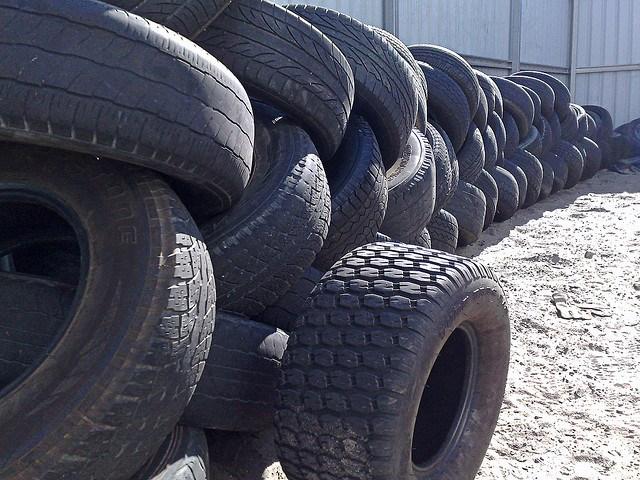

The Rubber Manufacturers Association (RMA) forecasts that passenger, light truck and truck tire demand will rise nearly 2 percent in 2014 to reach 302 million units. Though no one knows just how many there actually are, there are many times more tires accumulating in dumps in every nation around the world – a festering, growing threat to human and environmental health and safety.
Lehigh Technologies is on a mission to “green” the lifecycle of synthetic and rubber tires. Using a proprietary “green chemistry” process, Lehigh replaces petroleum-based materials by recycling discarded tires and turning them into micronized rubber powders (MRPs) that can be used to manufacture a wide range of rubber and plastic products – all manner of vehicle/transportation tires included. The benefits are numerous and manifold, from reducing manufacturers' operating costs to helping conserve tropical forests and ecosystems, reducing greenhouse gas emissions, and helping alleviate air, soil and water pollution associated with waste tire dumps.
On Sept. 3, Lehigh announced that it had raised another $8 million in support of its efforts to expand geographically and realize the milestones established in its technology road map. Joining with earlier venture capital investors including Index Ventures, Florida Gulfshore Capital, Kleiner, Perkins, Caulfield & Byers, and Leaf Clean Energy, is Japan's JSR Corp., a $4 billion specialty chemicals company.
"Greening" the tire value chain
Lehigh Technologies aims to enhance economic, as well as environmental and social, sustainability in the global market for tires and other synthetic and natural rubber and plastic products. The Tucker, Georgia-based company has set its sights on seeing 1 billion new and retread tires manufactured via its high-tech recycling process on the roads.
The International Energy Agency (IEA) has forecast that by 2035 the number of vehicles on the world's roads will more than double and exceed 1.7 billion. Most of that growth will come from China and other large, rapidly industrializing nations.
Dependent on a wide variety of situation-specific factors, it's difficult to come up with an average life for tires. As a rough guideline, experts put the number anywhere from 20,000-80,000 miles – roughly from as little as 1.5 to as many as almost eight years' worth of driving for the average American.
Recycling tires
Concerns about the multiple, growing threats discarded tires pose to human and environmental health and safety aren't new. In 2008, RideLust's Vito Rispi wrote:
“More than 240 million tires are thrown away each year in the United States. Fewer than 7 percent are recycled, 11 percent are burned for fuel, and 5 percent are exported. The remaining 78 percent are sent to landfills, stockpiled, or illegally dumped. That’s almost 190 million old tires a year wasted in this country alone.”
Lehigh's tire recycling process and MRPs address this issue head-on. As the company explains, its technology replaces petroleum-based synthetic and natural rubber raw materials to produce a wide range of sustainable consumer and industrial products. The MRP proces, the company elaborates, “transforms end-of-life tires and other post-industrial rubber into high-performance, lower cost, sustainable micronized rubber powders (MRP).”
Lehigh operates the world’s largest MRP production facility, capable of producing 140 million pounds of MRPs per year, according to management. Use of the company's MRPs extends to plastics, asphalt and construction materials.
Working with six of the world's ten largest tire manufacturers, more than 250 million discarded tires, and counting, have been manufactured using Lehigh's MRPs. In addition to the world's largest tire manufacturers, its customer base includes leading flooring manufacturers and their counterparts in construction materials, modular flooring and coatings.
In addition, Lehigh has invested in “best-in-class research and development facilities, where it works with customers to develop new and more advanced MRP formulations for high-value applications in the tire and rubber, plastics and asphalt industries, among others.”
Recycling and "green" chemistry
In effect, the “green” chemistry/sustainable materials company and its partners are closing the loop on the tire market life-cycle. As Lehigh management explains:
“These MRPs replace oil- and rubber-based feedstocks in a wide range of industrial and consumer applications, including high performance tires, consumer and industrial plastics, consumer goods, coatings and sealants and construction materials. We tailor our PolyDyne™ and MicroDyne™ MRPs to our customers’ needs to maximize benefits and optimize performance. We also offer our customers comprehensive Closed-Loop services.”
The $8 million of additional VC funding affords management the capital it needs to realize its strategic business plans. Moreover, Lehigh's commercial relationship with JSR is likely to develop beyond the provision of capital. Elaborated Lehigh Technologies' CEO, Dr. Alan Barton:
“Commercial sales of MRP have been growing rapidly- over the past few years alone, we’ve demonstrated annual growth rates of 30 percent. Furthermore, we have made significant inroads into markets outside of the United States.
“However, this latest round of financing will give the company additional resources to drive growth in Europe and Asia, eventually culminating in local manufacturing. JSR, a highly regarded leader in polymer technology, will play a key role in this process.”
A $4 billion, multinational specialty chemicals company, JSR's business operations and relationships are extensive, particularly across the world's manufacturing hub: the Asia-Pacific region.
“Under the concept of E2 initiative, JSR is continuously seeking opportunities to contribute to low carbon society through Materials Innovation,” added Koichi Kawasaki, JSR Corp. executive managing officer.
“Partnering in Lehigh’s growth and geographic expansion strategy is a great fit for JSR, as the company’s novel MRP technology offers our customer base a new material that brings a strong value proposition and sustainability benefits.”
Dubbed E2 for short, JSR's sustainability initiative consists of two inter-related programs: Eco-innovation and Energy Management. Via E2, JSR aims to create value by developing environmentally-friendly products, as well as reduce greenhouse gas emissions across its manufacturing plants.
Investing in and partnering with Lehigh will help JSR realize both these aims. Expanding use of Lehigh's MRPs holds out the promise of significantly enhancing environmental sustainability across the tire market value chain by boosting low recycling rates, as well as boosting manufacturers' bottom lines.
*Images credit: 1) Flickr/vagawi; 2) Modern Tire Dealer; 3) Lehigh Technologies
Unilever Pledges to Stop Killing Male Chicks
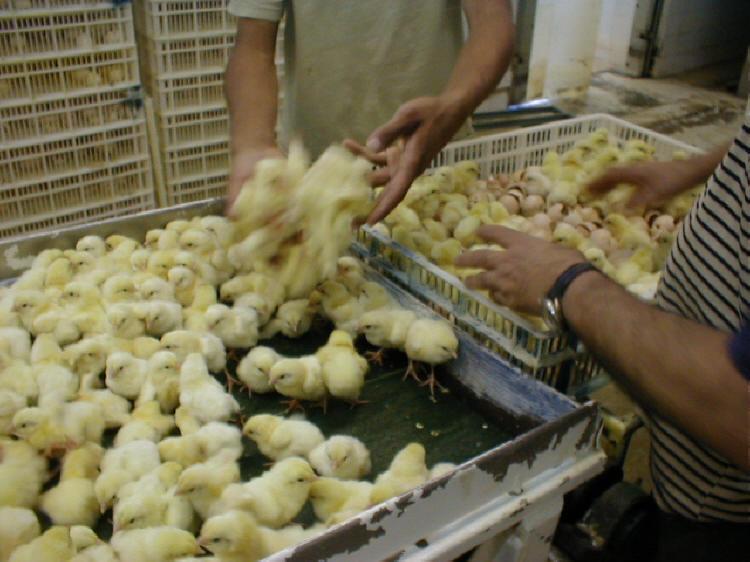

Egg-laying hens are bred for a single trait: laying eggs. Breeders select the most productive hens, which result in greater egg production. Unfortunately, male chicks are not productive, either for laying eggs or producing meat (compared to a chicken bred for meat).
“Somewhere along the way the male chick became disposable," says Janice Neitzel, principal of Sustainable Solutions Group. "The chicks are thrown in to the high-speed grinder and if all goes as planned, killed instantaneously. But it isn’t pretty. Consumers may not be currently aware of this global practice, but with social media -- it is just a matter of time. “
This may change, as Unilever recently announced that it pledges to find a solution to this industry-wide practice, which kills millions of male chicks annually. Unilever will fund research to seek alternatives, such as technologies that allow egg hatcheries to determine the gender of embryos before maturing into chicks.
"We are committed to providing financial support to research and market introduction of in-ovo gender identification (sexing) of eggs, a new technology that has the potential to eliminate the hatching and culling of male chicks in the poultry-breeding industry," Unilever announced in a press release. If successful, this initiative could spare millions of male chickens each year, and it would offer a solution for a major area of concern for animal welfare activists. It is an example of a strong corporate citizenship initiative, where a company is working to solve a problem that could have global implications for the industry. As the third largest consumer goods company in the world, this initiative is part of a goal to source 100 percent of its agricultural raw materials sustainably by 2020. Unilever is working to make the farming industry more humane, while bringing various stakeholders together: egg producers, research and development companies, and the animal welfare community.
"We are arranging meetings with animal-welfare experts, egg industry organizations, suppliers and other stakeholders to develop a multi-stakeholder dialogue and tangible steps to address this important issue and explore alternative options," Unilever announced in its press release.
The male chick initiative adds to recent achievements and commitments by Unilever for more humanely-sourced products. Unilever has a commitment to use exclusively cage-free eggs (also known as non-battery caged) in its products, including mayonnaise, mustard, dressing, ice cream and sauce. Half of the eggs in Unilever’s North America supply are certified by the American Humane Association or Humane Farm Animal Care. This ensures that laying hens are not put in battery cages, where the hen's muscles and bones often deteriorate from lack of space and movement.
“Our mission to use 100 percent cage-free eggs by 2020 is in full swing,” says Deenya Rabius, Category Mix Marketing Director at Unilever Food Solutions. “We already source cage-free eggs for many of our products, and are continuing to expand use as supply grows.”
Sourcing such large quantities of cage-free eggs is not a small feat. Using cage-free eggs for Hellmann's Light Mayonnaise requires an estimated 3.5 million pounds of eggs from 125,000 hens for 30 million jars of mayonnaise.
Sourcing higher welfare ingredients is a smart move for Unilever to protect its brand. “As viral videos bring light to standard agricultural practices, retailers and restaurant chains need to prioritize understanding the supply chain animal welfare practices as consumer knowledge is rising exponentially,” says Neitzel.
Image credit: Animal Friends Croatia (upper photo) and Flickr/Opacity (lower photo)
Sarah Lozanova is a regular contributor to environmental and energy publications and websites, including Mother Earth Living, Green Building & Design, Triple Pundit, Urban Farm, and Solar Today. Her experience includes work with small-scale solar energy installations and utility-scale wind farms. She earned an MBA in sustainable management from the Presidio Graduate School and she resides in Belfast Cohousing & Ecovillage in Mid-coast Maine with her husband and two children.
Heineken USA Takes Sustainability Seriously
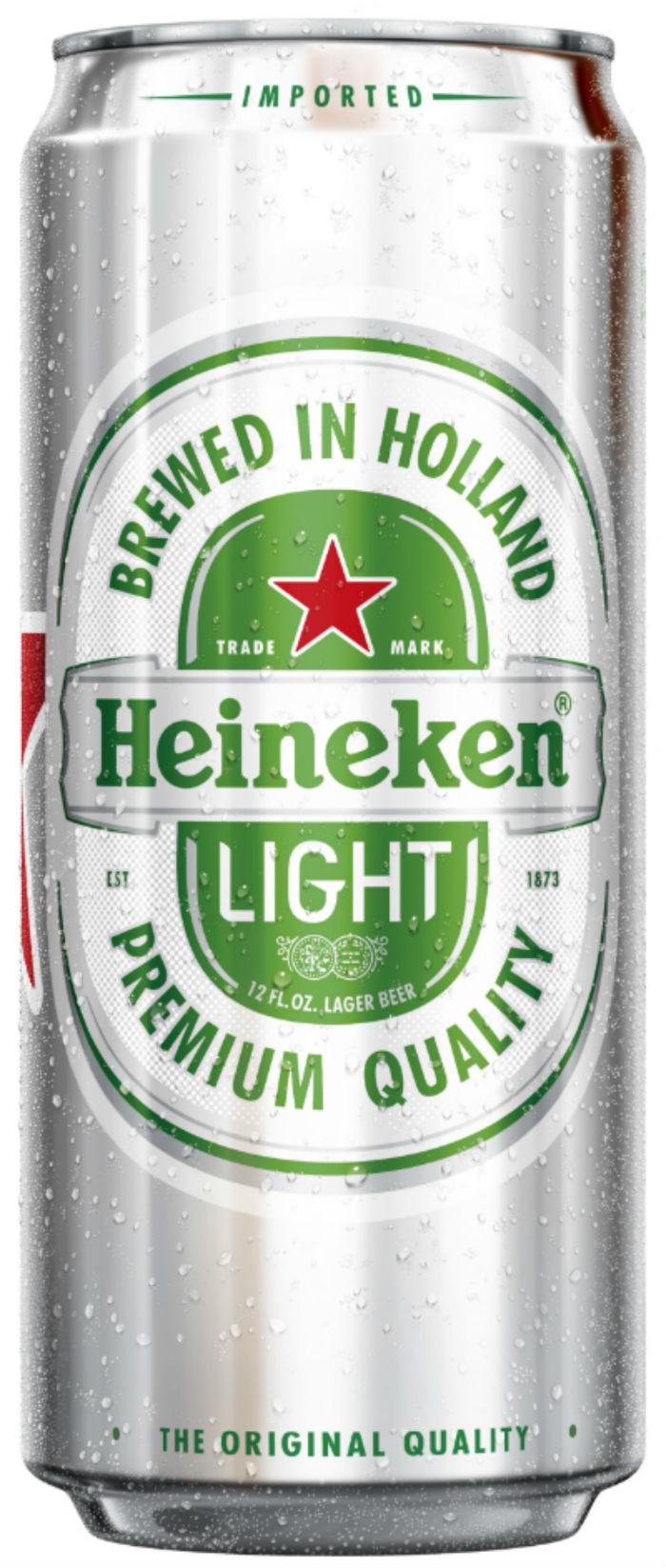

It’s not a small thing for a company with almost 500 employees, eight offices, over 20 beers and ciders in its portfolio, and almost $4 billion in direct economic impact on the country to strive for sustainability. The company in question is Heineken USA, and its New York City office reduced water use by 20 percent and electricity use per square foot to 25 percent below what is required by local codes. Its parent company Heineken has reduced water use by its breweries around the world per unit of finished product by 5 percent in 2013. Heineken has also reduced carbon emissions by 26 percent.
Heineken’s global sustainability program, Brewing a Better Future, has four key areas of focus: advocating responsible consumption, reducing carbon dioxide emissions, conserving water resources and sourcing sustainably. To encourage responsible consumption among its employees, Heineken began a pilot program in 2013 that provided a few of its employees with Alcohoot, which connects to a smartphone and tells users how much alcohol they have consumed. It also links to the GPS in smartphones and can link to taxi apps so employees can find a safe way home. The device is now given to all of the company’s employees. In 2013, Heineken USA increased the amount of free rides offered to employees through its Safe Ride programs by 122 percent.
Heineken also advocates responsible consumption through marketing campaigns. In 2011, Heineken launched the global campaign Sunrise and through it reached over 3 million people. A year later, Heineken’s responsible consumption message was on almost 8 billion Heineken branded bottles and cans.
Partnerships are also part of its strategy to encourage responsible consumption. Heineken partners with organizations and businesses in 33 markets to find new ways of encouraging responsible consumption. The company collaborates with governments on 'don’t drink and drive' campaigns. In addition, Heineken collaborates with leaders in the drinks industry in five areas: underage drinking, marketing codes of practice, consumers information and production innovation, drunk-driving and retailer support.
Reducing carbon dioxide emissions
Heineken USA reduced its carbon footprint in distribution by 1.7 percent since 2011, and employee-car emissions decreased by 6 percent in 2013. The company acknowledges that the reduction is not as much as it “hoped for,” so it is focusing its efforts on achieving a greater reduction. The company has lofty carbon reduction goals for other areas. Heineken plans on reducing carbon emissions in production by 40 percent, in its refrigerators by 50 percent and in its distribution chain in the U.S. and Europe by 20 percent.
Conserving water resources
Heineken USA wants to reduce water use in the breweries that supply its imported beers and ciders by 25 percent. Heineken has achieved a 5 percent reduction per gallon of finished product in its Dutch breweries and has reduced total water use by 20 percent. A 20 percent reduction equals the water needs of 1,700, two-person households for an entire year.
Sourcing sustainably
Heineken USA relies on Heineken to supply its beers and ciders and Heineken relies on various suppliers. Heineken’s goal is to source at least 50 percent of its raw materials from sustainable sources while delivering 60 percent of agricultural raw materials in Africa through local sourcing . Heineken also wants suppliers to comply with its Supplier Code Procedures. By the end of 2013, 100 percent of applicable Heineken USA suppliers were in full compliance with its supplier code guidelines.
Image credit: Heineken
SOCAP14 Interview: Thaddeus Owen, Herman Miller
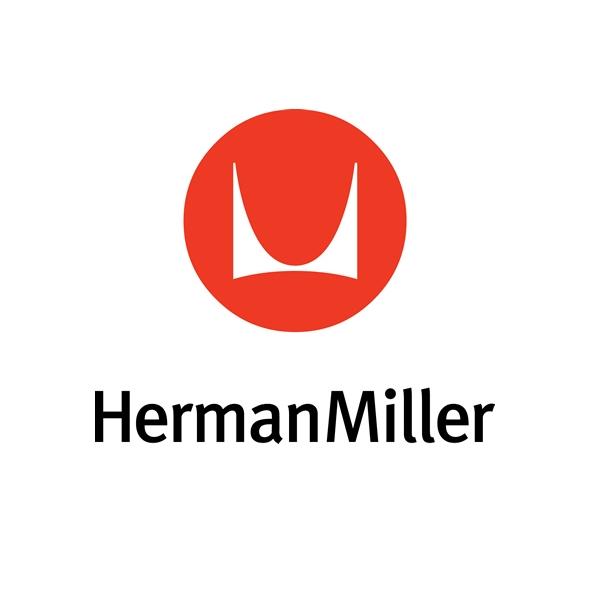

This video is part of our ongoing coverage of SOCAP14. To see the rest please visit our SOCAP 14 page here.
In this video, Herman Miller's chief engineer on the sustainability team, Thaddeus Owen talks about what sustainability means at the company. Specifically he discusses the concept of radical transparency across the company's supply chain as well as with regards to the chemicals and other ingredients that go into Herman Miller's products.
A Young Filmmaker’s Journey to Change the World

Editor’s Note: This article originally appeared in “The Millennials Perspective” issue of Green Money Journal.
By Holly Mosher
In 2006 I started off on two different film journeys. One was to make a film on world visionary Muhammad Yunus and his amazing creation of microcredit and social business that was selflessly helping millions of people and closing the economic gap in Bangladesh; the other was to follow the path of political corruption through the selfish influence of corporate money in the United States. The irony of working on two films, one following the influence of less than $100 on people’s lives versus the other showing the influence of over $10 billion spent in the last election cycle, was not lost on me.
Bonsai People – The Vision of Muhammad Yunus shows how social business can create a more just society and give people a chance to lift themselves out of poverty, while Pay 2 Play: Democracy’s High Stakes, highlights how -- just as in the game of Monopoly -- American politics has become winner-take-all, morphing our country into an oligarchy (as was confirmed by the recent Gilens and Page study that came out of Princeton and Northwestern).
While making Bonsai People I learned much about the field of social enterprise and how it can change lives, altering the balance of wealth in society for the better. In Pay 2 Play, I witnessed my own country being destroyed by a relatively few wealthy people willing to spend their millions (chump change for those who are worth billions) to influence elections across the country, supporting politicians who owe them legislative favors once they are in office, making it difficult for Congress to pass any bills that are good for WE THE PEOPLE.
In Pay 2 Play we began by following the story of Coingate in Ohio, where fundraiser and activist Tom Noe was using public funds from the Bureau of Workers Compensation and investing it in rare coins, LeBron James jerseys and Beanie Babies, while peddling political interest for his own and his party’s gain. Noe was later convicted for his crimes, but all too often the corruption continues unchecked, as corporations use their get-out-of-jail-free cards, usually paying small fees compared to the large amounts they’ve “earned” taking advantage of others while breaking the law.
Little did we know when we started filming Pay 2 Play, that four years later the Supreme Court would open the floodgates of spending for political influence with its egregious Citizens United v. FEC decision allowing unlimited amounts of corporate spending in elections. And this year we saw the Supreme Court lifting certain limits on individual spending in the McCutcheon v. FEC decision, allowing individual donors up to $5.9 million per election cycle and even more incredulously allowing closely held corporations religious freedoms in the Burwell v. Hobby Lobby decision. The power of the Supreme Court to drastically change the balance of corporate power has, as of yet, gone unchecked.
People were willing to take to the streets to voice their concerns (seen by the numbers that came out in Occupy Movements around the globe) because they see how these decisions and corporate influence are destroying our democracy. MoveOn did a survey of their members in January 2014 and found that getting money out of politics was the biggest concern of their millions of members, and OurTime.org found that their members aged 18-35 said getting money out of politics was their second biggest concern.
WE THE PEOPLE understand the need to get big money out of politics if we are going to get any of the other reforms or protections passed in this country. Whether people care about sensible gun safety laws, the environment, the problems of mass incarceration, etc., corporate lobbyists are blocking real change by controlling the way their politicians vote. Further, there are many good people in office who have been corrupted by the broken system that rewards and encourages bigger donations every year.
Read Holly's complete article here.
Holly Mosher is an award-winning filmmaker who brings socially conscious films to the public. After graduating with honors from New York University’s Tisch School of the Arts, Holly produced a number of commercials and feature films. In 2004 she made her directorial debut with her award-winning documentary, Hummingbird, about two nonprofits in Brazil that work with street kids and women suffering domestic violence.
Afterwards, Holly produced two films on the pharmaceutical industry: Side Effects, starring Katherine Heigl, and Money Talks: Profits Before Patient Safety. She co-produced Maybe Baby, and executive produced Vanishing of the Bees, FREE FOR ALL!, and the new Pay 2 Play: Democracy’s High Stakes.
The second film she directed, Bonsai People – The Vision of Muhammad Yunus, is currently airing on American Public Television. The Hollywood Reporter named her one of the top up-and-coming independent film producers.
No change at the top as Unilever leads supply chain league


The top three companies in this year’s Gartner European supply chain ranking are unchanged from 2013. PG Tips maker Unilever comes in at no1, followed by Inditex (the Spanish fashion retail group) and Sweden's fashion chain, H&M, at no3.
Every year IT and advisory research company Gartner identifies the top 15 performers (headquartered in Europe), based on a combination of financial metrics (revenue growth, return on assets and inventory), and the opinion of peers and Gartner supply chain analysts.
Technology company Seagate made its debut at no4. The Irish-registered manufacturer of storage devices also ranked twentieth in the global top 25. Gartner says the company showcased an impressive array of operational excellence and customer connection programs, and a return on assets that is second only to Apple on the high-tech list.
There were also three new entries: Ahold, Delphi Automotive and Reckitt Benckiser.
You can access the complete listing here.
EAC calls for creation of 'Office for Environmental Responsibility'


The UK government has been given a ‘red card’ for its efforts to reduce health-damaging air pollution, protect biodiversity and prevent flooding in a scorecard assessment of its green policies during this Parliament produced by the Environmental Audit Committee (EAC).
The report comes as the main political parties prepare for their manifesto-setting party conferences. The Committee calls for the creation of new legal commitments to protect the environment, to be overseen by a new 'Office for Environmental Responsibility' to ensure all Government policies are compatible with those commitments.
On air pollution the report finds that emissions of a number of airborne pollutants increased in 2013, after being steady between 2010 and 2012 and in a longer term decline before that. While on biodiversity, the latest Sustainable Development Indicators show a deterioration in the counts for three out of four types of bird populations, used as a litmus test for the SDI's ‘UK wildlife' indicator. Invasive species, which harm native biodiversity, are becoming more prevalent.
And with regards to flooding and coastal protection, the report points out that while the Environment Agency and local defences protected properties in approximately 1.3m instances, 2.4m properties are still at risk of flooding from rivers or the sea, and 3m from surface water.
Chair of the committee, Joan Walley MP, said: “Our inquiry provides a wide ranging examination of the state of the environment and shows that further and continued effort is required to protect it properly. A dedicated, wide-ranging ‘Environmental Strategy’ is needed, overseen by a new ‘Office for Environmental Responsibility’ to ensure the Government meets the requirements to protect human health and the natural world.”
Picture credit: © Mrallen | Dreamstime.com - York Floods - Sept.2012 - UK Photo
3p Weekend: What Creative Workspaces and Fantasy Football Have in Common
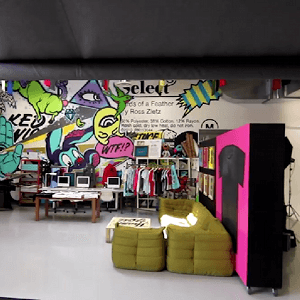

With a busy week behind you and the weekend within reach, there’s no shame in taking things a bit easy on Friday afternoon. With this in mind, every Friday TriplePundit will give you a fun, easy read on a topic you care about. So, take a break from those endless email threads, and spend five minutes catching up on the latest trends in sustainability and business.
As scores of happy (and not-so-happy) fans know all too well, the pro football season kicked off last week. Now, after reviewing scores from week one, fantasy football owners must make sure they are asking the right questions to inform their lineups before a new round of games begin. One of the most common queries is: Who will score the most points this year?
Unfortunately, that question won't lead players down the path to success. Instead, fantasy owners should focus their efforts on constructing a weekly, winning lineup. Similarly, organizations should focus on assembling the right team to ensure success and employee support, said Max Chopovsky, founder of Chicago Creative Space, a culture consultancy and online platform that features videos of Chicago's most interesting workplaces.
As it turns out, successful workplaces and winning football teams have a lot in common. Chopovsky let us in on the following five tips for creating a successful team, both on and off the field.
1. Draft the right players
"You have to hire the right people; you've got to be sure that they genuinely want success for your organization," Chopovsky said. "There's a saying about sports: 'You don't field the 11 best, you field the best 11.' You have to put the best people on the field that perform cohesively as a group. They have to understand that there's a common goal, and they have to be very results-oriented."
So, how do workspaces fit in? Before you can land those perfect employees, you have to get them interested first. "Space has to be an accurate representation of [a company's] culture," Chopovsky said. "You can say you have a great culture, but if your space is not a fit for that, then when the candidate walks in they're going to see that."
For example, Red Frog Events, an events promotion company based in Chicago, dubbed their workspace "Camp Red Frog" -- complete with tree houses, zip lines and even foosball tables, a nod to the company's irreverent, offbeat culture. Click the photo below to watch the workplace tour.
2. Bring the team together
"You need camaraderie when you go into battle as a team," Chopovsky said. "You need to understand that the guy or girl next to you is going to have your back -- and that you don't have to ask them."
When it comes to the workspace, this is very critical: It's one thing to have an open door policy, but it's another to break down the physical walls between executives and employees and allow a free flow of ideas. When Steve Jobs was consulting on the design of a new office for Pixar, he mandated an open atrium in the center of the space that employees would have to cross to grab a cup of coffee or use the restroom, Chopovsky said. As Jobs put it, "When people make eye contact, things happen."
Braintree's Chicago office, for example, features a huge open area where employees can meet, share ideas and strengthen their connections. Click the photo below to watch the workplace tour.
3. Foster solid values
Setting solid values is crucial to any team, whether it's on the field or in the board room. One example of solid values at work is fostering an environment of trust and transparency, Chopovsky said. For example, if the whole team is meeting -- from interns all the way up to the CEO -- and a summer intern offers an idea that's better than the CEO's idea, the team should be okay with that, he continued, which is where trust comes in.
"Space is direct reflection of those values," he continued. "For trust and transparency, you obviously can't have a bunch of offices and walls separating your team." Allowing ample open space for co-working or using glass instead of drywall are two ways to allow trust and transparency to shine through the workspace.
kCura, which develops Web-based e-discovery applications for litigation and investigations, took things a step further: The company's workspace features its core values literally written on the walls; it also uses these values to make hiring decisions. Click the photo below to watch the workplace tour.
4. Provide the right tools
It's important for football players to have access to the right equipment and the right training facilities, but it's equally important to give employees the tools they need to succeed. This ranges from ample natural light and open space for co-working to increasingly popular BYOD (bring your own device programs), Chopovsky said.
"If your employees are spending time thinking about: 'How can I do something?' or 'How can I make something work?' ... they're spending less time thinking about their work," he explained.
For example, in addition to a welcoming workspace, financial services company Enova supports virtually any BYOD device you can think of -- allowing its employees to use what makes them most comfortable in order to succeed on the job. Click the photo below to watch the workplace tour.
5. Remove all barriers to success
"We've heard this described almost in these exact words ... You must remove all the barriers, all the obstacles that stand between your team and their work," Chopovsky said.
"Take the [Coyote Logistics] video for example: It's over a $2 billion company, and the CEO of that company, who's also the co-founder, will sit out with his employees." That's a big deal, he went on to explain, as it goes beyond "my door is always open" to sharing ideas with employees on a daily basis. Click the photo below to watch the workplace tour.
Other options may be as simple as a growling belly, Chopovsky continued. Google, for example, provides a full-floor cafeteria at its Chicago office so employees will spend more time thinking about work and less time thinking about feeling peckish.
Based in Philadelphia, Mary Mazzoni is a senior editor at TriplePundit. She's also an avid fantasy sports player still trying to turn those playoff berths into championship victory. (Currently in round-one in her fantasy baseball league -- crossed fingers are appreciated.) You can follow her on Twitter @mary_mazzoni.
From Fishing Nets to Carpet, ECONYL Invests in More Nylon Recycling
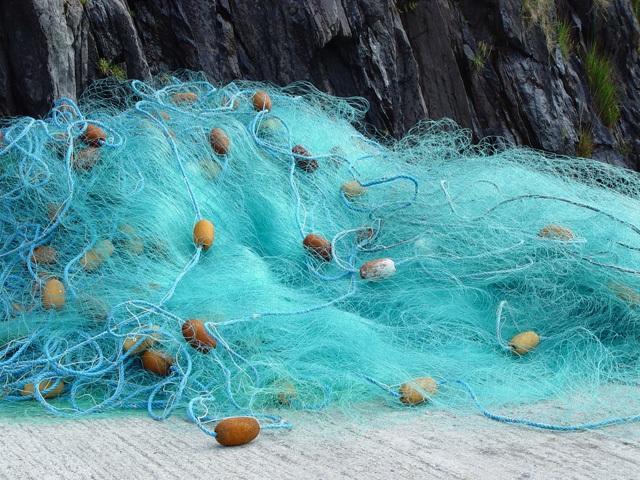

One does not have to look far to see how the production of textiles has a huge impact on our planet, water and land. And if you add the effects of the carpet industry, the story becomes even more worrisome. While carpet recycling has improved in recent years, the stubborn fact remains that the world will require more fiber — from cotton, to wool, to fossil-fuel based materials such as polyester — in the coming years. Estimates suggest the world’s demand for fibers will reach 96.4 million tons in 2020, up from 76.4 tons in 2010.
One Italian company, Aquafil, seeks to reduce that demand by improving textile and carpet recycling, educating consumers, and finding new markets for its fibers and yarns. Yesterday I had a telephone conversation with Maria Giovanna Sandrini, Aquafil’s brand and communication manager for ECONYL, to learn how this company is boosting its bottom line while raising awareness about the environment.
What’s most interesting about this firm? Your future outfit -- or carpet in the home or office -- could, oddly enough, have a tie to the fishing industry.
The Aquafil Group has produced yarns and fibers for over 40 years. A chance meeting with Interface’s former CEO, the late Ray Anderson, was part of the company’s shift towards investing in more research and development to find other ways to manufacture fibers out of materials that for decades had no other home than dumpsters and landfills.
One of the company’s most important resources is the bounty of fishing nets that can be found across the world’s ocean and seas. We already know that current methods of fishing are destructive — but the damage to wildlife often continues after a trawler peruses the high seas because many of these fishing nets are left behind. Hence ghost fishing and wasteful bycatch often continue as marine life can get trapped in these nets — and, as Ms. Sandrini noted, as many as 600,000 are scattered across the world’s seas. To that end, Aquafil has been working with a Dutch NGO, ECNC Group, to harvest those discarded nets and send them to the company’s plant in Slovenia, where about 50 employees begin the “regeneration” process.
Along with these nets, Aquafil has a worldwide program that collects carpet fluff and fabrics — 30,000 tons worth between 2011 and 2013. The company’s feedstock of choice is Nylon 6, from which the company says it can transform 100 percent into new yarn from its six-step recycling and regeneration process. The company has invested $20 million euros (US$26 million) over four years to optimize this process.
“What we do is not simply recycling — which is a noble practice,” said Ms. Sandrini during our chat. “We view it as more of a rebirth: we take that waste which otherwise has no value and transform it into a new raw material.”
And the end result is a material, caprolactam, that has a stark difference from the recycled clothing made from recycled PET bottles that has long been on that market. While PET bottles churned into fleece is a better option than sending those same bottles to a landfill, as of now there is a technical problem with those garments: Once the consumer no longer wants that jacket or shirt, it cannot be recycled. But Nylon 6 spun from caprolactam, according to Ms. Sandrini, can be reprocessed again and again, allowing for more of a closed loop system. Hence she prefers the term "regeneration" for what company does over "recycling."
ECONYL’s regenerated yarns, once they are processed at three different factories in Slovenia, are ready to be spun into new carpets, and now, garments. For now, ECONYL yarns can be found in swimwear brands including La Perla, Arena and Koru.
While Aquafil seeks new customers in the textile and garment industries, the company is also finding ways to educate consumers. One path is through a game the company has sponsored, Nylla, which prompts the user to recover waste in the ocean while avoiding marine life. “We aren’t a game company,” said Ms. Sandrini, “but we are dealing with a complicated process. We are dealing with different kinds of waste that are all important to our company. So we want children and young people to understand that waste is not simply ‘waste,’ but rather, should be considered as a resource.”
Companies such as Aquafil/ECONYL have an uphill climb as manufacturers still favor conventionally manufactured yarns and textiles, but finding those new customers should be easier as more consumers learn about how their home furnishings and garments can wreak havoc on the environment. Add the upward trajectory in the cost of raw materials, and recycled textiles will become more commonplace in the years ahead—as it should be, when one accounts for the use of pesticides, consumption of energy and destruction of wildlife.
Image credit: Wikipedia (Peter Church)
Leon Kaye has lived in Abu Dhabi for the past year and is currently spending some time in Uruguay. Follow him on Instagram and Twitter. Other thoughts of his are on his site, greengopost.com.